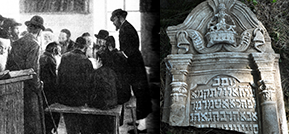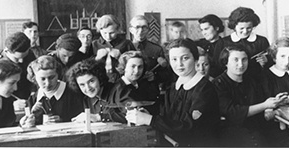Wilhelm Reich (24 March 1897 – 3 November 1957) was an Austrian psychoanalyst, a member of the second generation of psychoanalysts after Sigmund Freud, and one of the most radical figures in the history of psychiatry. He was the author of several influential books and essays, most notably Character Analysis (1933), The Mass Psychology of Fascism (1933), and The Sexual Revolution (1936).[2] His work on character contributed to the development of Anna Freud's The Ego and the Mechanisms of Defence (1936), and his idea of muscular armour – the expression of the personality in the way the body moves – shaped innovations such as body psychotherapy, Fritz Perls's Gestalt therapy, Alexander Lowen'sbioenergetic analysis, and Arthur Janov's primal therapy. His writing influenced generations of intellectuals: during the 1968 student uprisings in Paris and Berlin, students scrawled his name on walls and threw copies of The Mass Psychology of Fascism at the police.[3]
Notes:
1. For Stirner and Landauer, see Danto 2007, p. 308, footnote 60.
2. That he was one of the most radical figures in psychiatry, see Sheppard 1973.
Danto 2007, p. 43: "Wilhelm Reich, the second generation psychoanalyst perhaps most often associated with political radicalism ..."
Turner 2011, p. 114: "[Reich's mobile clinic was] perhaps the most radical, politically engaged psychoanalytic enterprise to date."
For the publication and significance of The Mass Psychology of Fascism and Character Analysis, see Sharaf 1994, pp. 163–164, 168.
For Character Analysis being an important contribution to psychoanalytic theory, see:
Young-Bruehl 2008, p. 157: "Reich, a year and a half younger than Anna Freud, was the youngest instructor at the Training Institute, where his classes on psychoanalytic technique, later presented in a book called Character Analysis, were crucial to his whole group of contemporaries."
Sterba 1982, p. 35: "This book [Character Analysis] serves even today as an excellent introduction to psychoanalytic technique. In my opinion, Reich's understanding of and technical approach to resistance prepared the way for Anna Freud's Ego and the Mechanisms of Defence (1936)."
Guntrip 1961, p. 105: "... the two important books of the middle 1930s, Character Analysis (1935) by Wilhelm Reich and The Ego and the Mechanisms of Defence (1936) by Anna Freud."
For more on the influence of The Mass Psychology of Fascism, see Kirkpatrick 1947, Burgess 1947; Bendix 1947; and Turner 2011, p. 152.
3. For Anna Freud, see Bugental, Schneider and Pierson 2001, p. 14: "Anna Freud's work on the ego and the mechanisms of defense developed from Reich's early research (A. Freud, 1936/1948)."
For Perls, Lowen and Janov, see Sharaf 1994, p. 4.
For the students, see Elkind, 18 April 1971; and Turner 2011, pp. 13–14.
To read more click here







